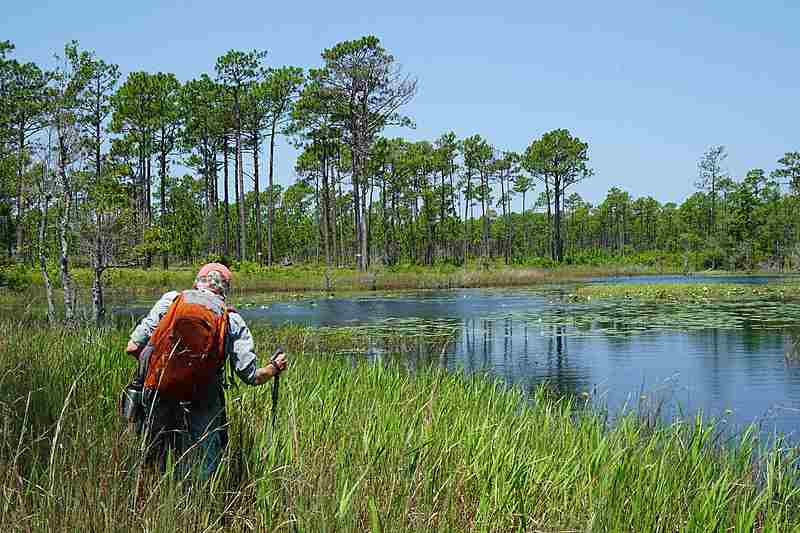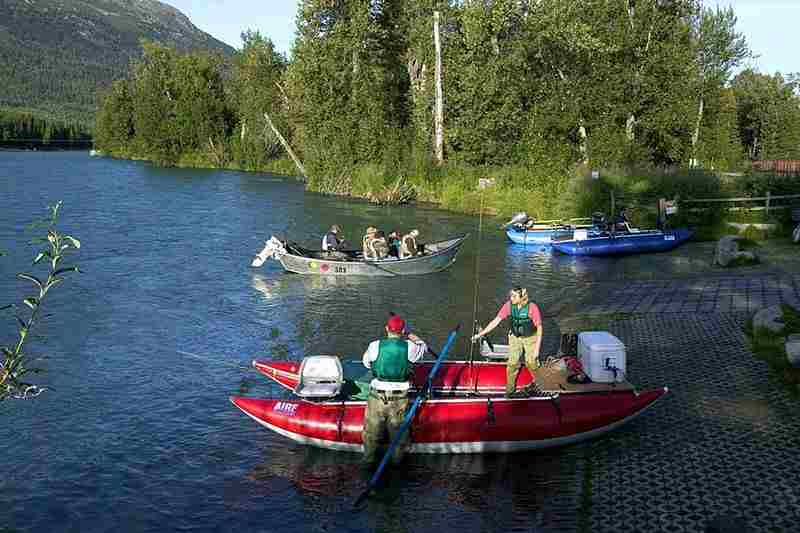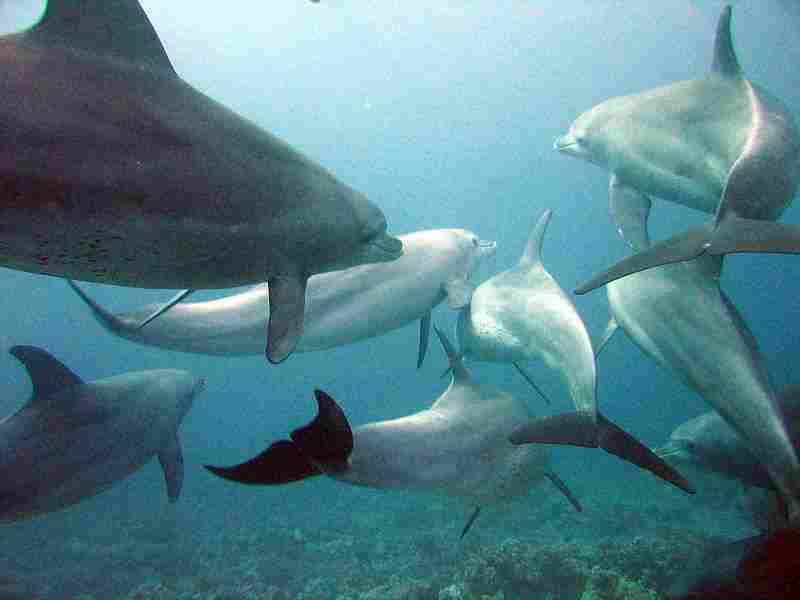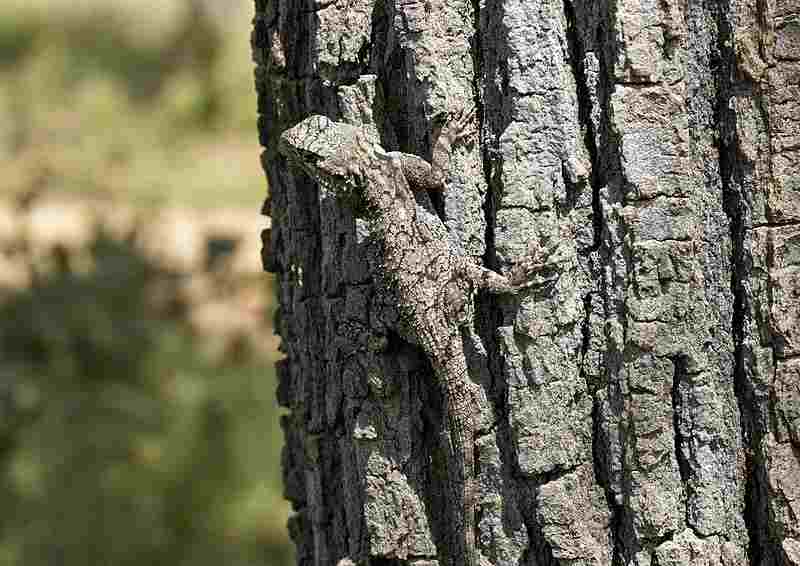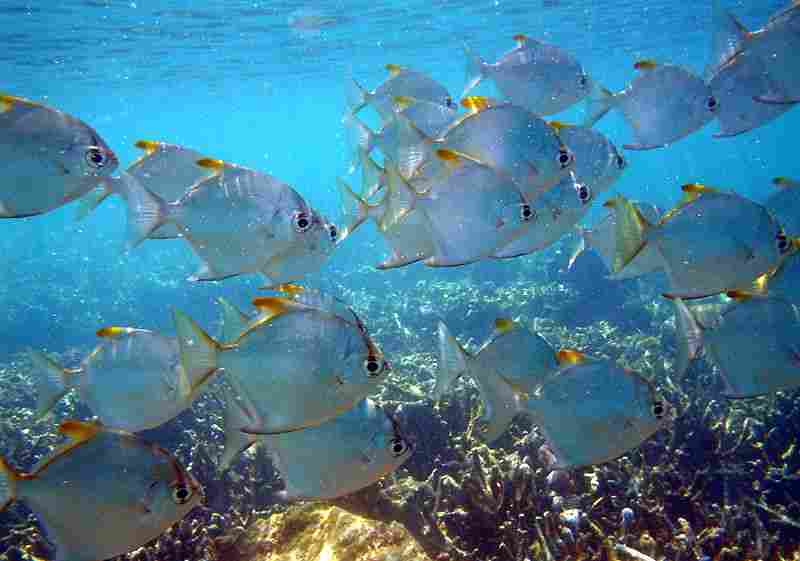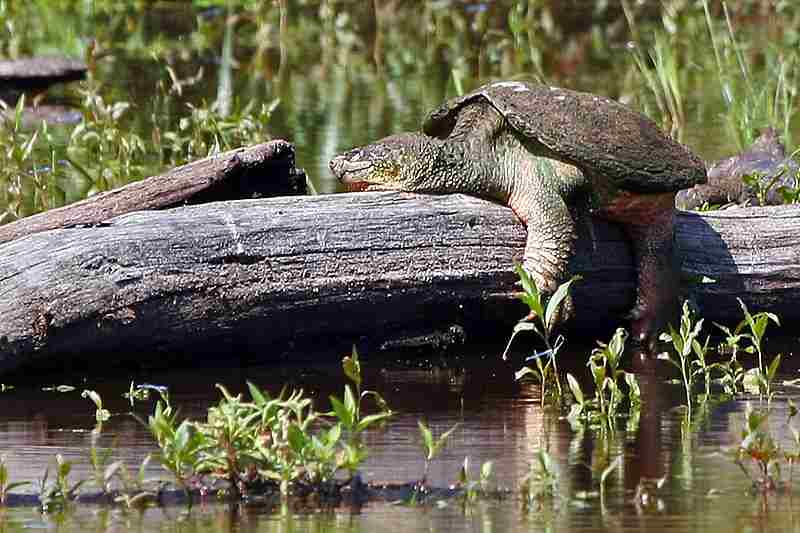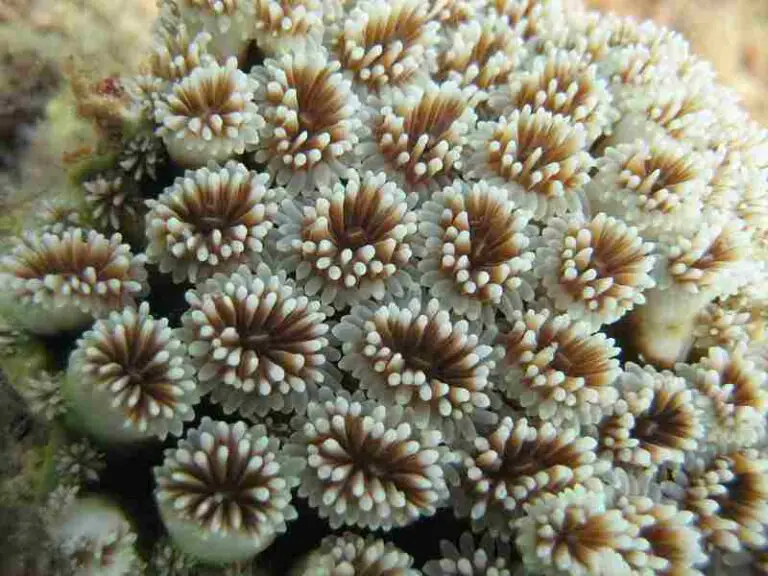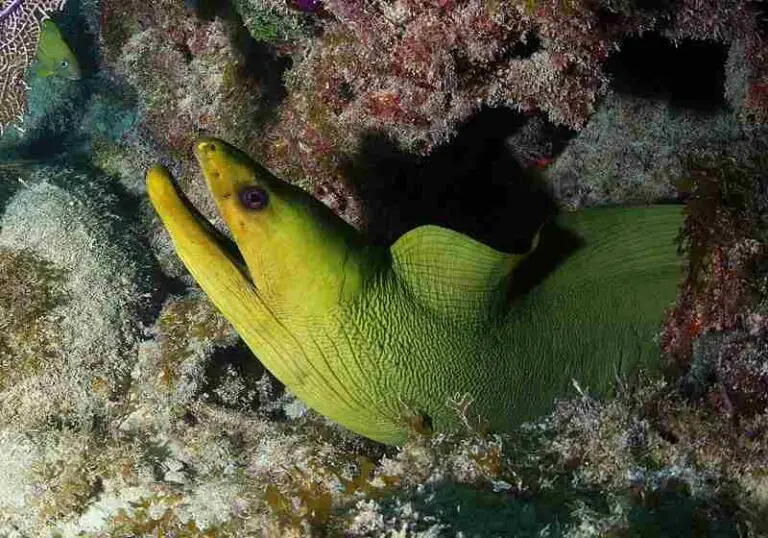9 Salt Marsh Abiotic Factors and Their Ecological Functions
Salt marsh abiotic factors include; light, water, sediments, dissolved gases, physicochemical conditions, nutrient availability, and topography.
This article discusses salt marsh abiotic factors and their ecological functions, as follows;
1). Light (as one of the Salt Marsh Abiotic Factors)
Light is an important abiotic component of the salt marsh ecosystem, and has a pivotal role to play in establishing and maintaining the structure, function, and typical dynamics of this unique coastal habitat.
The availability of light influences various biotic and abiotic processes, ultimately driving the productivity and diversity of the salt marsh ecosystem.
Functions of Light in a Salt Marsh Ecosystem
Functions of light in a salt marsh ecosystem include; photosynthesis, primary production, facilitation of plant growth, habitat formation, nutrient cycling, temperature regulation, and biodiversity sustenance.
Light energy (contained in solar radiation) essential for photosynthesis; the process by which plants convert sunlight into energy while producing oxygen [7].
Salt marsh plants, particularly vegetation like grasses, depend on photosynthesis to produce their own food, and contribute to the overall energy transfer dynamics, within the ecosystem.
The amount of light that reaches the marsh surface, directly impacts the rate of primary productivity. Plants utilize light energy to convert carbon dioxide and water into glucose and other organic compounds (which signifies the process of primary production). Higher light availability results in increased plant growth and biomass production.

Light intensity affects the growth and structure of salt marsh plants. Plants compete for light, leading to adaptations and distinctive structural configurations such as vertical growth which help these plants to maximize their exposure to sunlight. Light availability also influences plant density, distribution, and species richness/composition.
Habitats are created by the photosynthetic effect of light which influences the establishment of different plant species that in turn shape the physical structure of the salt marsh.
Plants provide microhabitat and protection for various marsh organisms [12], including nesting and foraging sites for birds, as well as shelter and anchorage for small invertebrates.
Light-driven photosynthesis facilitates the uptake of carbon dioxide from the atmosphere. This process contributes to carbon sequestration, and the reduction of atmospheric carbon. It also plays a role in regulating the global carbon cycle.
Additionally, photosynthesis supports nutrient-recycling with processes like nutrient uptake and biodegradation facilitating the flow of energy through the food web.
Solar-infrared radiation accompanies sunlight and supplies thermal energy that contributes to temperature regulation within the salt marsh. Sunlight that is absorbed by the sediments and water influences water temperature, which in turn impacts the distribution and behavior of aquatic organisms.
An indirect function that can be attributed to sunlight in salt marshes is erosion control.
The growth of vegetation, which is supported by photosynthesis, helps to stabilize sediments and prevent erosion. Healthy salt marsh plants may trap sediment particles and produce a network of roots that hold the soil together [2], thereby reducing the impacts of wave energy and tidal action.
Lastly, light availability influences the types of plants that are able to grow in different zones of the salt marsh, resulting in a mosaic of habitats. This diversity of habitats make diverse niches available for various plant and animal species, thereby contributing to overall ecosystem biodiversity.
2). Water
Water is a fundamental abiotic component of a salt marsh ecosystem, and is a central factor in its structure, ecological processes, and functions.
The availability, dynamics, and quality of water all influence various biotic and abiotic interactions within the marsh, making it a vital element required for the maintenance of this unique coastal environment.
Functions of Water in a Salt Marsh Ecosystem
Functions of water in a salt marsh ecosystem are; habitat creation, nutrient cycling, salt balance, oxygen availability, temperature regulation, erosion, sedimentation, as well as facilitation of organic breeding.
Water is a defining feature and ambient medium of the salt marsh, which creates a transitional zone between land and sea [13]. The presence of water establishes habitats for a diverse range of species, including aquatic organisms like fish and crustaceans, as well as semi-aquatic and terrestrial species like birds and mammals.
Flow of water within the marsh, facilitates the transport of nutrients, organic materials, and sediments. Tidal inflows and outflows translocate nutrients from adjacent aquatic systems, and deposit them within the marsh, thereby supporting primary productivity and nutrient cycling.
Interactions between freshwater and saline water in a salt marsh, are vital for the maintenance of appropriate salinity levels. Tidal water flows influence the balance between saltwater intrusion and freshwater input, and affect the distribution of halotolerant and salt-sensitive plant species.
The oxygen cycle is also influenced by water in a salt marsh.
Water flow and exchange contribute to oxygen availability within the marsh sediments. Oxygen-rich water masses can be transported into sedimented zones during tidal inundation, thereby providing oxygen to plant roots and promoting aerobic microbial activity.
Temperature regulation is supported by water bodies within the marsh, through their ability to absorb and release heat. This moderation of temperature influences the growth and activity of both aquatic and terrestrial organisms.
Sedimentary processes are strongly influenced by water within the marsh environment; which is both an agent of weathering and erosion.
Water movement, in the form of tides and waves, drives erosion and sediment deposition in the salt marsh. Sediments that are transported by water may settle within the marsh, where they contribute to sediment-accretion and the formation of marsh platforms.
The hydrological cycle is driven chiefly by dynamics of water flow within the marsh, and affects water levels, saturation, as well as drainage patterns. These dynamics are behind the establishment of different plant communities and the formation/modification of ecosystem structure.

Lastly, water bodies within the salt marsh serve as important nursery and breeding grounds for various species, including fish and invertebrates. The sheltered conditions and availability of nutrients, support the early life stages of many aquatic organisms.
Four Abiotic Factors Affecting Marshes: An Overview
Four abiotic factors affecting marshes are; salinity, temperature, soil moisture, and tidal flow.
Salinity represents the concentration of salts in the water, and affects the types of plant and animal species that can survive and thrive in a marsh ecosystem.
Variations in temperature, influence the growth and metabolism of organisms, as well as the rate of various ecological processes.
The soil moisture in different parts of marshes, affects plant growth, nutrient availability, and microbial activity among others.
Lastly, tidal patterns and fluctuations influence water circulation, nutrient exchange, and sediment deposition, and shapes the structure and function of the marsh ecosystem.
3). Sediments (as one of the Salt Marsh Abiotic Factors)
Sediments are an important abiotic component of a salt marsh ecosystem, which determines its physical structure, ecological processes, and biogeochemical nutrient cycling.
These sediments, which comprise of various mineral particles combined with organic matter, play a key role in supporting the unique characteristics of salt marshes and their inhabitants.
Functions of Sediments in a Salt Marsh Ecosystem
Sediments in a salt marsh ecosystem may function as substrate for vegetation growth, source of nutrients, habitat for invertebrates, medium for detoxification and water filtration, site of microbial activity, and carbon sequestration.
Marsh sediments provide a suitable substrate for the growth of salt-tolerant vegetation, such as salt marsh grasses. The accumulation of sediments is instrumental to the formation, elevation and expansion of marsh platforms [8], on which most of these plants grow.
Nutrients such as phosphorus and nitrogen may also be found in marsh sediments, and are essential to support the growth of plants and other organisms in the habitat. Sediments serve as a reservoir of nutrients that can be released and taken up by plants.
Various invertebrates rely on sediments as a habitat and foraging ground.
These organisms include; worms, mollusks, and small crustaceans. They all play important roles in nutrient cycling and maintenance of food chains within the marsh.
Detoxification can be facilitated by marsh sediments which act as filters that trap contaminant particles and mobile pollutants carried by water. They also have the ability to bind and sequester many contaminants, thereby contributing to quality improvement and mitigation of water pollution.
The deposition of sediments on the marsh surface contributes to processes of sedimentation and accretion. Over extended periods of time, accumulated sediments can cause the elevation and expansion of marsh areas.
Microbial communities in the marsh sediments contribute to biogeochemical processes, such as nutrient cycling, and decomposition of organic materials [1]. These processes are essential to the continuity and health of the ecosystem.
Organic matter that occurs in sediments, contributes to carbon storage in salt marshes. This stored carbon plays a role in mitigating greenhouse gas emissions, by reducing the amount of atmospheric carbon dioxide.
Also, marsh sediments indirectly help to mitigate the effectiveness of agents of erosion like water. Dense vegetation that is anchored in sediments, helps to stabilize the marsh platform, preventing erosion from tidal action and waves.
Overview of The Sediments in Salt Marshes
The sediments in salt marshes include; fine-grained particles such as clay and silt, coarser materials like sand, and varying amounts of organic detritus, which are all combined together.
These sediments usually accumulate over time, and contribute to the physical structure, nutrient availability, as well as ecological functions of the salt marsh ecosystem.
The composition and attributes of sediments can influence the types of plant and animal species that are able to thrive within the marsh environment.
4). Dissolved Gases
Dissolved gases, especially oxygen (O2), have a central role to play towards the health and sustainability of a salt marsh ecosystem.
The concentration of dissolved gases in the water and sediments, is an important abiotic metric that affects various biotic components as well as ecological processes within the marsh.
Functions of Dissolved Gases in a Salt Marsh Ecosystem
Functions of dissolved gases in a salt marsh ecosystem are; respiration-facilitation, photosynthesis, aerobic decomposition, maintenance of biotic communities, oxygen zonation, and water quality control.
Oxygen is an essential resource for the respiration of aquatic organisms, including fish, various invertebrates, and hydrophytic plants. These organisms are able to extract dissolved oxygen from the water to carry out the metabolic processes necessary for their survival.
Dissolved gases are also important in photosynthesis. Aquatic plants, including salt marsh grasses, require oxygen for their photosynthetic processes. During photosynthesis, these plants release oxygen into the water, and contribute to dissolved oxygen levels.
Microbial communities that inhabit marsh sediments and water carry out aerobic decomposition (by breaking down organic matter in the presence of oxygen), require oxygen to perform their ecologic functions. The aerobic decomposition process, releases nutrients back into the water and contributes to nutrient cycling.
As earlier stated, adequate levels of dissolved oxygen are important for supporting a diverse range of aquatic species, from primary producers to consumers in higher trophic levels. Fluctuations in oxygen concentrations can therefore impact species composition and abundance.
Zonation of the salt marsh water column can be attributed partly to dissolved gases like oxygen. Oxygen content influences the formation of oxygen minimum zones; which are areas where oxygen concentrations are lower due to high rates of microbial activity and decomposition [11]. These zones can impact the distribution and behavior of organisms.
Dissolved oxygen levels are also an indicator of water quality. Adequate oxygen concentrations are essential to prevent the buildup of pollutants and maintaining a healthy aquatic environment.

Status of Dissolved Gases as Abiotic Components of Ecosystems
Dissolved gases are considered abiotic components of an ecosystem, because are not living organisms but are physicochemical in both their nature and effect on the aquatic environment.
Dissolved gases, such as carbon dioxide and oxygen, are important abiotic factors that affect the behavior and physiological attributes of biotic components within the salt marsh, including plants and animals.
5). Physicochemical Conditions (as one of the Salt Marsh Abiotic Factors)
Physicochemical conditions encompass factors like salinity, temperature, pH, and nutrient availability, and constitutes a vital abiotic component that strongly influences the health, diversity, and functionality of a salt marsh ecosystem.
Functions of Physicochemical Conditions in a Salt Marsh Ecosystem
Functions and aspects of physicochemical conditions in a salt marsh ecosystem are; salinity regulation, temperature regulation, pH, nutrient availability, decomposition rates, oxygen levels, water quality control, adaptation and zonation.
Salt marshes are under the direct influence of tidal fluctuations, which result in varying salinity levels. The ability of plants and animals to adapt and thrive under changing conditions of salinity, shapes the composition of the ecosystem.
Temperature affects the growth, metabolic rates, as well as reproductive activities of organisms. Physicochemical conditions in a salt marsh therefore determine the range of species that can survive the range of temperature variation, of the intertidal zone.
pH levels influence the availability of nutrients, by impacting the chemical occurrence of elements in the sediment and water column. Organisms are generally adapted to specific pH ranges, so that variations beyond their tolerable range can adversely impact their health and survival.
Nutrient availability is closely linked to other abiotic factors like water quality and sediment composition. Nutrients like phosphorus and nitrogen are essential for the growth of plants, and for overall ecosystem productivity.
Physicochemical conditions affect the rate of decomposition, of organic matter in marsh sediments. Higher nutrient availability and warm temperature can accelerate decomposition, thereby releasing nutrients back into the ecosystem.
Dissolved oxygen levels are also influenced by physicochemical conditions. Sufficient amount of oxygen is essential for the respiration of aquatic organisms and the sustenance of aerobic decomposition.
The interactions of different physicochemical factors collectively determine the quality of water in a salt marsh. Optimal water quality is essential for supporting diverse biotic communities.
Lastly, organisms in salt marshes may exhibit zonation on the basis of their tolerance to specific physicochemical conditions. Certain plants and animals are adapted to thrive in high salinity zones closer to the sea, while others prefer freshwater and estuarine conditions farther inland.
6). Nutrient Availability
Nutrient availability is a crucial, physicochemical, abiotic component of the salt marsh ecosystem, and influences the productivity, growth, and trophic interactions of various organisms.
Nutrients, such as sulfur, nitrogen, and phosphorus, are all essential for the survival of plants, animals, and microbes in the marsh environment.
Functions of Nutrient Availability in a Salt Marsh Ecosystem
Functions of nutrient availability in a salt marsh ecosystem include; primary production, microbial activity, decomposition, nutrient cycling, plant community structuring, control of biotic interactions, and contribution to ecologic resilience.
Primary production is influenced by nutrient availability because this parameter determines the necessary elements that are accessible for plant growth.
Marsh grasses and other vegetation require phosphorus and nitrogen for photosynthesis and biomass production/accumulation.
Activities of microorganisms, especially bacteria, are integral to nutrient cycling in marsh sediments [14]. Nutrient availability impacts the growth and activity of these microbes, which in turn help to transform elements like nitrogen and sulfur from one chemical state to another.
Nutrient-rich detritus from decaying salt marsh vegetation, serves as a source of organic raw material to microbes in the biome. These decomposers, including bacteria and fungi, act upon, and break down this organic matter, thereby releasing nutrients back into the ecosystem.
Cyclic movement/flow of nutrients occurs in the marsh ecosystem, as these nutrients are transferred between living organisms, sediments, and water. Nutrient cycling involves their uptake by plants, transfer to herbivores (and from thence to carnivores and omnivores) and detritivores, and eventual release through decomposition.
Availability of nutrients, influences the composition and species diversity of plants in the salt marsh. Certain plant species are adapted to thrive in nutrient-rich zones, while others may dominate nutrient-poor regions.
Biotic interactions such as predator-prey relations and herbivore-plant interactions, are influenced by nutrients in the salt marsh. Herbivores often select plants on the basis of their nutrient content, while predators may target prey with higher nutrient concentrations.
Lastly, nutrient availability contributes to the resilience of the marsh ecosystem by supporting the recovery of plants and other organisms following disturbances like flooding and stormwater submergence, or erosion.
How Organisms Obtain Nutrients in a Salt Marsh
Organisms obtain nutrients in a salt marsh through decomposition, detritivorous consumption, herbivory, omnivory, and carnivorous feeding.
Decomposers like bacteria and fungi, break down organic matter and release nutrients from these materials into the soil and water column. These released nutrients are then accessible to plants for uptake.
The plants absorb nutrients through their roots from the sediments and water in their environment. Nutrient availability in the soil therefore influences the growth and health of marsh vegetation.
Detritivores and herbivores consume detrital organic matter, and plant material rich in nutrients. These nutrients are transferred to other trophic levels when predators feed on herbivores.
Marsh microbes transform elements like phosphorus and nitrogen between various chemical phases, as part of nutrient cycling. These transformations ensure that nutrients remain available to plants and other organisms.
Common Nutrients in Marshes
Some common nutrients in marshes are; nitrogen, phosphorus and sulfur; all of which are essential to the makeup and organic sustainability of these habitats.
Nitrogen is an important component of plant and animal proteins, and is required for growth, general metabolism, and reproduction. It is often a limiting nutrient in many ecosystems, including salt marshes [6].
Phosphorus is essential for processes like cell division, energy transfer, and the synthesis of both nucleic acids and ATP. It is a component of DNA and RNA.
Sulfur is involved in various metabolic processes, including the synthesis of complex proteins, amino acids, and coenzymes.
7). Topography (as one of the Salt Marsh Abiotic Factors)
Topography is a fundamental abiotic component of both terrestrial and aquatic ecosystems, and contributes to the geomorphology, function, and trophic conditions within a salt marsh.
It can be defines as the sum total of variations in elevation and physical features of the landscape, including slope, terrain outline, and geographic components.
In a salt marsh, topography exerts a wide range of influences that extend to both biotic and abiotic components of the ecosystem.
Functions of Topography in a Salt Marsh Ecosystem
Functions of topography in a salt marsh ecosystem include; control of water drainage and flow, salinity gradient, plant zonation, microhabitat formation/availability, erosion, sediment deposition, and nutrient distribution.
Water flow and drainage patterns are strongly linked to topography [5]. The topography of a salt marsh determines the manner in which water flows across the landscape.
It influences the movement of tidal waters, rainfall runoff, and storm surges. Areas with differences in elevation, create natural pathways for water movement, and influence the distribution of water and dissolved nutrients across the marsh.
Spatial variations in elevation contribute to the establishment of salinity gradients within a salt marsh.
Areas with different elevations experience different levels of tidal inundation, which affect the salinity levels in those areas. The salinity gradient established through this effect, shapes the zonation of plant species adapted to different salinity conditions.
As stated above, the topography of a salt marsh influences the distribution of different plant species along the elevation gradient.
This is because different plant species exhibit varying degrees of salt tolerance, and are adapted to specific tidal flow regimes. The topographic conditions contribute to the formation of distinct zones, such as high marsh, low marsh, and intertidal areas, each of which supports unique plant communities.
Topographic features such as mounds, depressions, and slopes, create diverse microhabitats within the marsh habitat. These microhabitats are characterized by differences in moisture levels, exposure to tidal inundation, and sediment characteristics.

They provide niches for various plants, animals, and microorganisms, while enhancing biodiversity and ecological interactions.
Differences in elevation influence sediment deposition and erosion patterns. Higher areas may accumulate sediments brought by tidal currents, while lower areas might experience erosion due to the erosive force of water (or vice-versa in some areas). This interplay affects marsh stability and leads to further landscape changes over time.
Lastly, topography contributes to the distribution of nutrients by influencing water circulation. Nutrient-rich waters can be translocated to lower areas during flooding events, thereby impacting primary productivity and plant growth.
Status of Topography as an Abiotic Component of Ecosystems
Topography is an abiotic component of the ecosystem, because it refers to the physical characteristics of the landscape and is not living, organic in composition, or derived from living organisms. Rather, it shapes the conditions of the environment in which biotic components interact and adapt.
The topography of a salt marsh is a dynamic feature that interacts with other abiotic factors as well as biotic factors, influencing the overall structural configuration and functionality of the ecosystem.
8). Water Currents
Water currents, a significant abiotic factor in a salt marsh ecosystem, play a crucial role in shaping various ecological processes and trophic interactions within this dynamic coastal terrain.
These currents are driven by wind, tidal flows, and other hydrodynamic forces and have far-reaching impacts on both biotic and abiotic components of the ecosystem.
Functions of Water Currents in a Salt Marsh Ecosystem
Functions of water currents in a salt marsh ecosystem are; nutrient transport, control of sediment dynamics, seed dispersal, salinity and water quality influences, oxygen transport, detritus transport, hydrodynamic habitat creation/maintenance, erosion, sedimentation, physical stress, and adaptation.
Nutrient transport is a function of water currents within the marsh. These currents carry dissolved nutrients, sedimentary minerals, and organic matter, from one area to another, thereby redistributing essential resources for plant and microbial communities.
Nutrient-rich waters contribute to primary productivity while supporting the growth of various organisms.
Water currents mobilize sediments, including fine mineral particles and organic humus, across the salt marsh. They contribute to the deposition of sediments in some areas, and erosion in others, thereby influencing topography, microhabitat formation, and stability of the entire marsh ecosystem.
Seed dispersal in marshes is supported by water currents, which aid in the distribution of plant seeds and other reproductive structures. Seeds that are released by plants may be carried by water currents to suitable sites for their germination and establishment. This mechanism enhances plant diversity and colonization in different zones of the marsh.
Water currents are instrumental in the mixing of different water masses, which affects the distribution and conditions of salinity within the salt marsh. These currents can bring in high salinity waters from the open sea, or low salinity waters from freshwater sources, thereby impacting the distribution of species that are adapted to specific salinity regimes.
Oxygen transport and circulation are controlled by water currents, which contribute to the aeration of sediments by promoting the exchange of oxygen between the sediment surface and the water column [10]. This is important for nutrient cycling, microbial processes, and organic sustenance in the marsh ecosystem.
Detritus includes decaying plant material, which gets transported by water currents. This detritus serves as a food source for various microorganisms and detritivores in the marsh ecosystem.
Water currents establish varying hydrodynamic conditions within the marsh, and result in the formation of microhabitats with different flow rates, water depths, as well as exposure to tidal inundation. These conditions control the distribution of organisms, especially intertidal and benthic species.
Erosion and sedimentation processes are driven by water currents. The currents are capable of eroding marsh edges and transporting sediments to other areas, thereby influencing marsh topography and contributing to land-building processes.
Physical stress and adaptation of marsh organisms both result from water currents, which could be in the form of wave action and turbulence. These effects can influence the morphology and growth patterns of plants, and may affect the behavior and spatial distribution of animals.
9). Tidal Fluctuations (as one of the Salt Marsh Abiotic Factors)
Tidal fluctuations constitute a pivotal abiotic factor in the salt marsh ecosystem, and exert profound influences on its functioning, structural configuration, and biodiversity.
These fluctuations occur as a result of the gravitational forces of the moon and the sun [3], and lead to periodic changes in water levels, that immensely impact the dynamics of the salt marsh habitat.
Functions of Tidal Fluctuations in a Salt Marsh Ecosystem
Functions of tidal fluctuations in a salt marsh ecosystem are; habitat zonation, nutrient cycling, oxygen exchange, salinity variation, seed dispersal, regulation of benthic organisms, predator-prey dynamics control, erosion, deposition, establishment/maintenance of hydrological connectivity, and ecosystem resilience.
Habitat zonation can be attributed to tidal fluctuations, which establish distinct zones within the salt marsh, such as high marsh and low marsh (mentioned earlier), based on the duration and frequency of tidal inundation.
These zones play host to different plant and animal communities that are adapted to varying levels of water availability, salinity, and environmental stresses.
Nutrients are transported as a result of tidal inundation [9], along with organic matter and detritus, across the marsh. The cyclic exposure of marshes to varying water levels, contributes to nutrient cycling, promotes primary productivity and supports diverse microbial communities involved in decomposition processes, among others.
Tidal fluctuations facilitate oxygen exchange by introducing oxygen-rich seawater into the marsh during inundation, which drives the exchange of gases between the water column and the marsh sedimentary substrate. This oxygen exchange mechanism, is essential for microbial activities and nutrient transformations.
Salinity variation results from tidal influxes that introduce seawater with varying salinity levels into the marsh. This fluctuation in salinity produces gradients that influence the distribution of halophytic plant species which tolerate different levels of salt stress.
Like lateral water currents, tidal movements disperse seeds, reproductive structures, and other propagules of marsh plants. This aids in the colonization of virgin areas and contributes to the maintenance of plant diversity across the marsh.
Tidal fluctuations have influence on the distribution and activity of benthic organisms, including burrowing invertebrates like worms and crustaceans. These organisms are critical contributors to nutrient dynamics and sediment stability in their environment.
Predator-prey interactions are also influenced by tidal fluctuations, which expose potential prey organisms to predation during high tide, and may provide refuge during low tide (or vice-versa). These influences and interactions affect the population dynamics of marsh species.
Tidal flows contribute to sediment erosion from some sections of the marsh, and deposition in others. This dynamic process determines marsh topography by contributing to landform creation and erosion.
Hydrological connectivity in marshes is supported by tidal processes [4], which link the marsh to adjacent aquatic systems, and influence the exchange of nutrients, organisms, and organic matter between the interlinked habitats.
Lastly, tidal fluctuations may promote ecosystem resilience by subjecting organisms to dynamic conditions that cause them to adapt for survival. Species that can withstand the fluctuating water levels, temperature shifts, and varying salinity that accompany tidal processes, generally demonstrate greater resilience.
Main Threats to Tidal Salt Marshes
The main threats to tidal salt marshes are; natural hydrology changes, pollution, coastal development/urbanization, and activities/influences of invasive species.
Alterations in tidal patterns as a result of human activities, such as construction of water dams, channels or railways, disrupt the natural hydrology of regional salt marshes.
Pollution from agricultural runoff, thermal-industrial discharge, and other sources can negatively impact water quality and harm marsh organisms.
Urban development and infrastructure installations can lead to habitat loss, fragmentation, and alteration of tidal flows.

Other human-induced environmental impacts, such as filling or altering marsh elevations can disrupt the natural tidal inundation patterns and affect the structure and function of the ecosystem.
Invasive species can outcompete native organisms and disrupt the natural equilibrium of the marsh ecosystem.
Conclusion
Salt marsh abiotic factors are;
1. Light
2. Water
3. Sediments
4. Dissolved Gases
5. Physicochemical Conditions
6. Nutrient Availability
7. Topography
References
1). Barea, L. C.; Llorens, L.; Romani, A.; Gispert, M.; Verdaguer, D. (2022). "Litter decomposition of three halophytes in a Mediterranean salt marsh: Relevance of litter quality, microbial activity and microhabitat." The Science of The Total Environment 838(374):155743. Available at: https://doi.org/10.1016/j.scitotenv.2022.155743. (Accessed 30 August 2023).
2). Brooks, H.; Möller, I.; Carr, S. J.; Chirol, C.; Christie, E.; Evans, B.; Spencer, K. L.; Spencer, T.; Royse, K. R. (2020). "Resistance of salt marsh substrates to near‐instantaneous hydrodynamic forcing." Earth Surface Processes and Landforms 46(1). Available at: https://doi.org/10.1002/esp.4912. (Accessed 30 August 2023).
3). Butikov, E. (2002). "A dynamical picture of the oceanic tides." American Journal of Physics 70(10):1001-1011. Available at: https://doi.org/10.1119/1.1498858. (Accessed 30 August 2023).
4). Chen, X.; Zhang, M.; Jiang, H. (2022). "Morphological Characteristics and Hydrological Connectivity Evaluation of Tidal Creeks in Coastal Wetlands." Land 11(10):1707. Available at: https://doi.org/10.3390/land11101707. (Accessed 30 August 2023).
5). Chunying, W.; Shang, S.; Jia, D.; Han, Y.; Sauvage, S.; Pérez, J. M. S.; Kuramochi, K.; Hatano, R. (2018). "Integrated Effects of Land Use and Topography on Streamflow Response to Precipitation in an Agriculture-Forest Dominated Northern Watershed." Water 10(5):633. Available at: https://doi.org/10.3390/w10050633. (Accessed 30 August 2023).
6). Crain, C. (2007). "Shifting nutrient limitation and eutrophication effects in marsh vegetation across estuarine salinity gradients." Estuaries and Coasts 30(1):26-34. Available at: https://doi.org/10.1007/BF02782964. (Accessed 30 August 2023).
7). Dunton, K. H.; Tomasko, D. (1994). "In situ photosynthesis in the seagrass Halodule wrightii in a hypersaline subtropical lagoon." Marine Ecology Progress Series 107(3):281-293. Available at: https://doi.org/10.3354/meps107281. (Accessed 30 August 2023).
8). Fagherazzi, S.; Wilberg, P. L.; Temmerman, S.; Struyf, E.; Zhao, Y.; Raymond, P. A. (2013). "Fluxes of water, sediments, and biogeochemical compounds in salt marshes." Ecological Processes 2(1). Available at: https://doi.org/10.1186/2192-1709-2-3. (Accessed 30 August 2023).
9). Krask, J. L.; Buck, T. L.; Dunn, R. P.; Smith, E. M. (2022). "Increasing tidal inundation corresponds to rising porewater nutrient concentrations in a southeastern U.S. salt marsh." PLoS One. 2022 Nov 28;17(11):e0278215. Available at: https://doi.org/10.1371/journal.pone.0278215. (Accessed 30 August 2023).
10). Kuwae, T.; Kamio, K.; Inoue, T.; Miyoshi, E.; Uchiyama, Y. (2006). "Oxygen exchange flux between sediment and water in an intertidal sandflat, measured in situ by the eddy-correlation method." Marine Ecology Progress Series 307:59-68. Available at: https://doi.org/10.3354/meps307059. (Accessed 30 August 2023).
11). Long, A. M.; Jurgensen, S. K.; Petchel, A. R.; Savoie, E. R.; Brum, J. R. (2021). "Microbial Ecology of Oxygen Minimum Zones Amidst Ocean Deoxygenation." Front Microbiol. 2021 Oct 27;12:748961. Available at: https://doi.org/10.3389/fmicb.2021.748961. (Accessed 30 August 2023).
12). Mcivor, C.; Odum, W. E. (1988). "Food, Predation Risk, and Microhabitat Selection in a Marsh Fish Assemblage." Ecology 69(5):1341. Available at: https://doi.org/10.2307/1941632. (Accessed 30 August 2023).
13). Van Regteren, M.; Amptmeijer, D.; de Groot, A. V.; Baptist, M. J.; Elschot, K. (2020). "Where does the salt marsh start? Field-based evidence for the lack of a transitional area between a gradually sloping intertidal flat and salt marsh." Estuarine Coastal and Shelf Science 243:106909. Available at: https://doi.org/10.1016/j.ecss.2020.106909. (Accessed 30 August 2023).
14). Xing, Y. Z.; Liu, C.; An, S.-Q. (2007). "Microbes and their functions in sulfur cycle of coastal salt marsh sediments." Chinese Journal of Ecology 26(4):577-581. Available at: https://www.researchgate.net/publication/287640432_Microbes_and_their_functions_in_sulfur_cycle_of_coastal_salt_marsh_sediments. (Accessed 30 August 2023).
